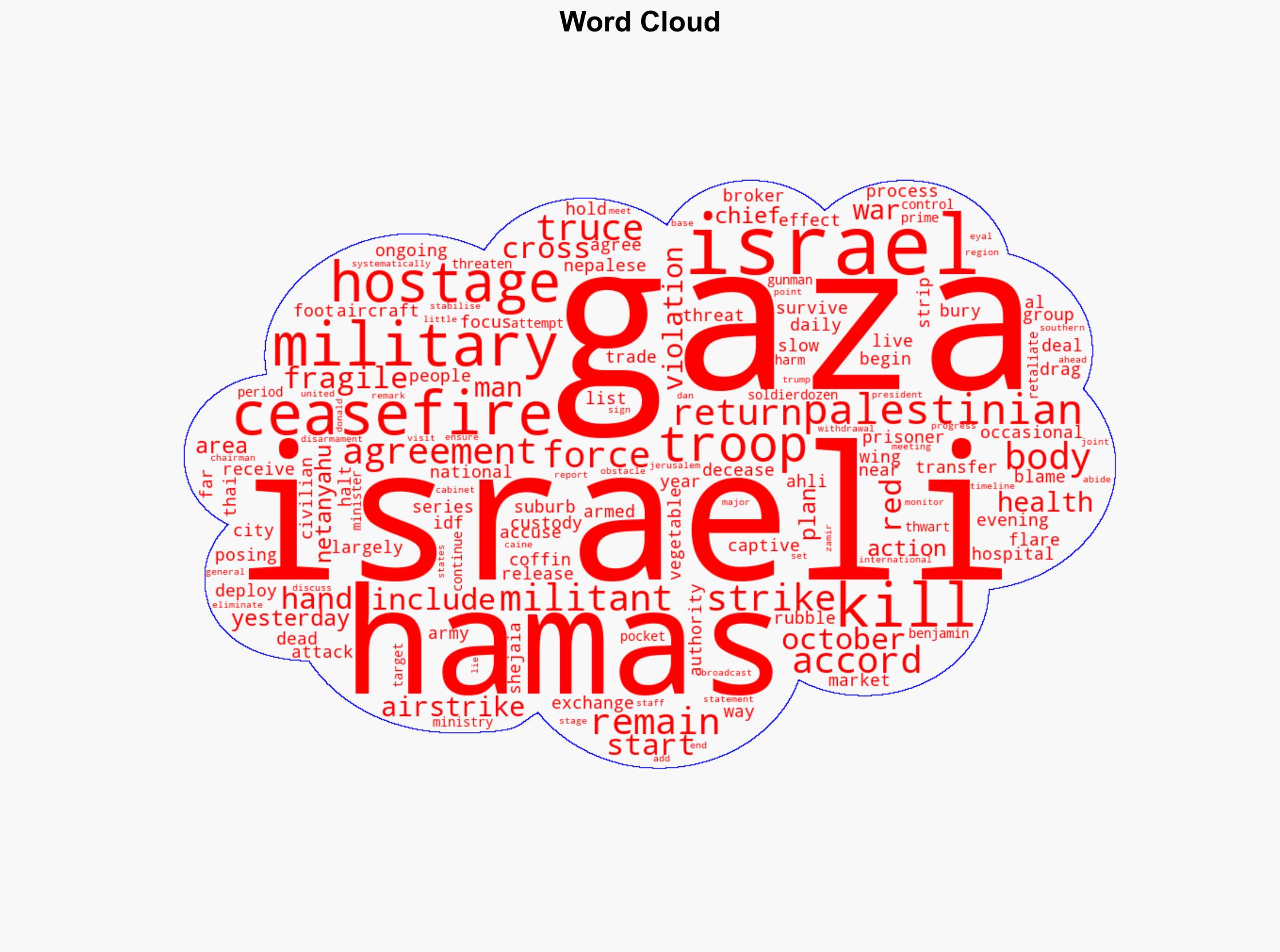One killed in Israeli airstrike on Gaza – RTE
Published on: 2025-11-02
Intelligence Report: One killed in Israeli airstrike on Gaza – RTE
1. BLUF (Bottom Line Up Front)
The most supported hypothesis is that the recent Israeli airstrike in Gaza is part of a broader strategy to maintain pressure on Hamas while navigating a fragile ceasefire. Confidence level: Moderate. Recommended action: Engage in diplomatic efforts to reinforce the ceasefire and address humanitarian concerns, while preparing for potential escalation.
2. Competing Hypotheses
Hypothesis 1: The Israeli airstrike was a targeted response to an immediate threat posed by militants in Gaza, consistent with Israel’s stated policy of retaliating against any perceived threats to its forces.
Hypothesis 2: The airstrike was part of a broader strategy to undermine Hamas’s control in Gaza, leveraging military pressure to gain concessions in ongoing negotiations and ceasefire agreements.
Using ACH 2.0, Hypothesis 2 is better supported due to the pattern of Israeli actions aimed at maintaining strategic pressure on Hamas, despite the ceasefire. The ongoing rhetoric from Israeli leadership and the timing of the strike suggest a calculated approach rather than a purely reactive one.
3. Key Assumptions and Red Flags
– **Assumptions:** Both hypotheses assume that Israel’s military actions are primarily driven by security concerns. Hypothesis 2 assumes a strategic dimension beyond immediate threats.
– **Red Flags:** The lack of independent verification of the events and casualty figures poses a risk of misinformation. The narrative from both sides may be biased, reflecting their strategic interests.
– **Blind Spots:** Limited visibility into internal decision-making processes within Hamas and Israel could obscure true intentions.
4. Implications and Strategic Risks
– **Escalation Risk:** Continued airstrikes risk undermining the ceasefire, potentially leading to renewed hostilities.
– **Geopolitical Impact:** The situation could strain Israel’s relations with international stakeholders advocating for peace.
– **Humanitarian Concerns:** Civilian casualties and infrastructure damage could exacerbate the humanitarian crisis in Gaza.
– **Psychological Impact:** Persistent conflict may fuel radicalization and undermine moderate voices on both sides.
5. Recommendations and Outlook
- Strengthen diplomatic channels to reinforce the ceasefire and address humanitarian needs.
- Monitor regional actors’ responses to gauge potential shifts in alliances or support.
- Scenario Projections:
- Best Case: Ceasefire holds, leading to constructive negotiations and humanitarian relief.
- Worst Case: Full-scale conflict resumes, destabilizing the region further.
- Most Likely: Sporadic violations continue, with intermittent diplomatic efforts to stabilize the situation.
6. Key Individuals and Entities
– Benjamin Netanyahu
– Hamas leadership
– General Dan Caine
– Eyal Zamir
7. Thematic Tags
national security threats, regional focus, ceasefire dynamics, military strategy





